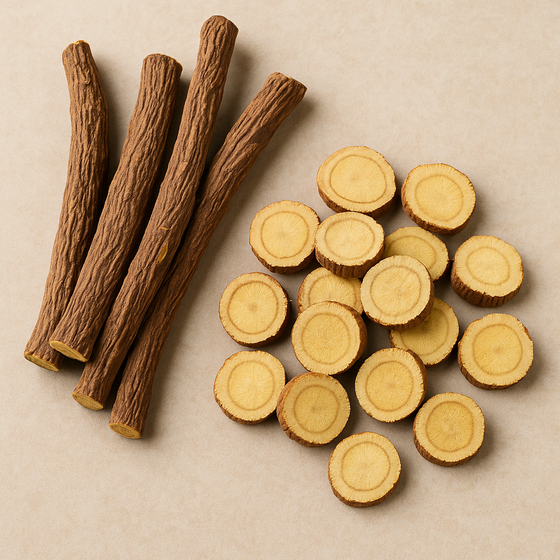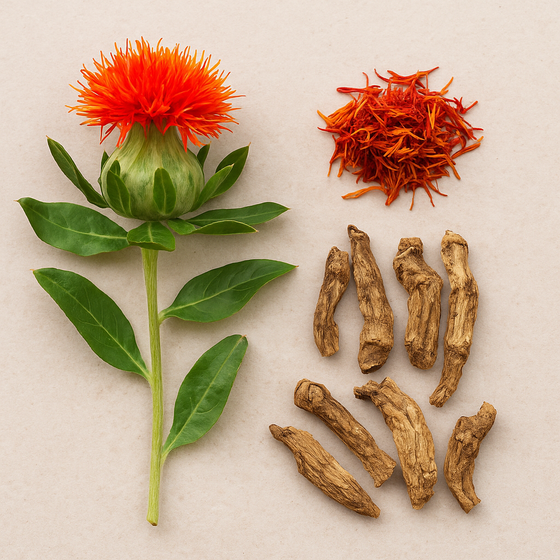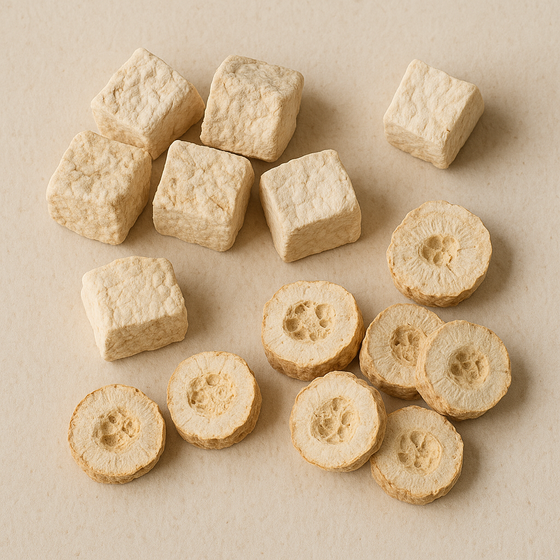
Duzhong (杜仲), or Eucommia Bark, has been used in Traditional Chinese Medicine (TCM) for more than 2,000 years. Traditionally valued for supporting the Kidney and Liver systems, it’s known for reinforcing structure, circulation, and internal strength.
While many tonic herbs focus on rapid effects, Duzhong is considered a foundational herb—used to stabilize, fortify, and support long-term balance.
First documented in classical texts such as the Shennong Bencao Jing (神农本草经).
Classified as a herb that tonifies Kidney yang, strengthens tendons and bones, and calms the fetus.
Often prescribed to address lower back and joint discomfort, or to support internal strength during aging or postpartum recovery.
It remains a core ingredient in formulas that address fatigue, weakness, and mobility support in TCM.
| Property | Description |
|---|---|
| Chinese Name | 杜仲 (Duzhong) |
| Latin Name | Eucommia ulmoides |
| Nature | Warm |
| Flavor | Sweet |
| Organs Targeted | Liver, Kidney |
In TCM theory, the Liver governs tendons and the Kidney governs bones. Duzhong is traditionally used to harmonize both, helping with:
Lower back and knee weakness
Joint support and muscle tone
Supporting prenatal and postnatal recovery
Promoting healthy aging by reinforcing foundational systems
Duzhong continues to be popular in both traditional formulas and modern supplements.
Commonly used in powdered extracts, capsules, and teas.
Studied for its potential to support blood pressure regulation, bone density, and physical resilience.
Often paired with herbs like Goji (Gou Qi Zi), Rehmannia (Shu Di Huang), or Astragalus (Huang Qi) in tonifying blends.
Scientific interest in Duzhong focuses on its active compounds, such as lignans and iridoids, which have been explored for their effects on circulatory and structural health.
Herbal Decoction – Simmer bark pieces with other TCM herbs in water
Capsules or Powders – Modern supplement format for daily support
TCM Formulas – Included in herbal blends targeting joint and kidney support
Duzhong is well tolerated when used appropriately and is commonly included in formulas designed for long-term constitutional support rather than acute use.
Duzhong (Eucommia Bark) continues to be a respected tonic herb in Traditional Chinese Medicine, valued for its grounding nature and broad applications. From ancient texts to modern formulations, it remains a staple for those seeking structure, strength, and inner harmony over time.
Have you used Duzhong in tea or as part of a TCM formula? Feel free to share your experience below.
Comments will be approved before showing up.
Gan Cao (Licorice Root, 甘草) is a harmonizing herb that balances the body, reduces inflammation, and supports the prostate. Used in nearly all classic TCM formulas, it soothes irritation, eases tension, and enhances overall synergy within herbal blends.
Hong Hua (Safflower, 红花) is a warm, acrid herb that invigorates blood, dispels stasis, and reduces pain. Traditionally used to enhance circulation and relieve inflammation, it supports prostate and urinary comfort through improved microcirculation.
Fu Ling (Poria cocos, 茯苓) is a mild yet powerful TCM fungus that helps clear dampness, support digestion, and calm the mind. Traditionally used to relieve urinary difficulty and edema, it’s a key herb for prostate comfort and inner balance.


